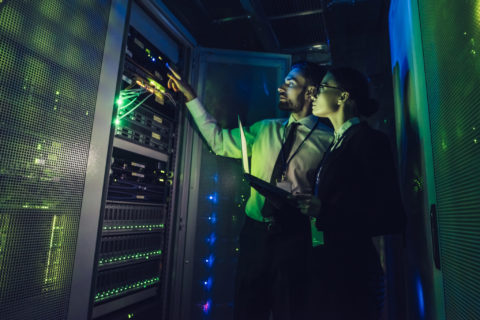By Malcolm Devoy, Chief Strategy Officer of PHD EMEA
You may not know it yet, but we are half way through “The Merge”. This is the term we are using to describe the journey we have been on since the invention of the first home computer to the point where humanity and technology will become indistinguishable from one another. This will have significant consequences on our world; as marketers, researchers, consumers and as humanity as a whole.
Ray Kurzweil, one of the world’s leading inventors and futurists believes that this singularity (the point at which machine intelligence can match, and then overtake human smarts) will give machines a form of consciousness.
As an example, a character in a Virtual Reality environment today might say, ‘I’m very angry at you’ but we don’t believe it because it doesn’t show the subtle signs that we associate with the state of being angry. By the 2030s, machines will have those behavioural nuances, and if they’re convincing enough, it will make them conscious.
It may sound like the science fiction of Ridley Scott’s Blade Runner from the early Eighties or I Robot in 2004. But what evolutionary break-throughs could occur in a similar 22-year time span to the one that separates these two films?
Information technology has been growing at an exponential rate for almost 70 years. In order to assess its future, we continued its trajectory curve beyond 2040 and plotted the Merge in five stages.
STAGE ONE: SURFACING
The introduction and early spread of screens and the World Wide Web ‘surfaces’ up information for us.
Stage one dates back to 1950 when only a handful of computers existed and they were the size of a small room. By the early 1980s, computers were still little more than flashy typewriters. In 1984 everything changed with the launch of Apple’s Macintosh.
By 1987, Apple had sold one million units and people were using computers for everything from education to entertainment.
When Microsoft introduced Windows, Apple tried to take legal action for plagiarism but was unsuccessful. As a result, by the end of Stage One in the mid-Nineties, 100 million computers were powered by the Windows operating system and the internet was in its infancy.
STAGE TWO: ORGANISING
The organisation of information through search engines, browsers, operating systems and apps.
Stage Two saw computing transformed from a rudimentary tool that some people used to surface knowledge, to an organised world of abundant information.
Three key inventions led to the spread of the modern-day web.
First came the original web browser Mosaic. By 1996, Mosaic had become Netscape Navigator and commanded an 86% share of the market. But when Microsoft packaged its browser in with Windows 95, Internet Explorer dominated with a 99% market share and Netscape was all but eradicated.
The invention of the browser saw the number of websites grow to around 230,000 by 1996. What was needed was a way for people to be able to find the information they were looking for.
If you’re an ESOMAR member you can read the full article in MyESOMAR in the digital copy of Research World. You can also download the full report here. If you’re not a member of ESOMAR you can join and receive a free copy of Research World 6 times a year or alternatively you can sign up for a subscription of the magazine in our publications store.


